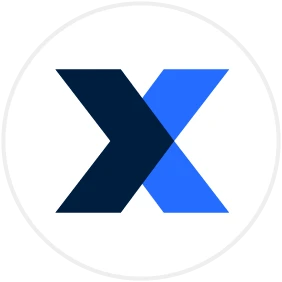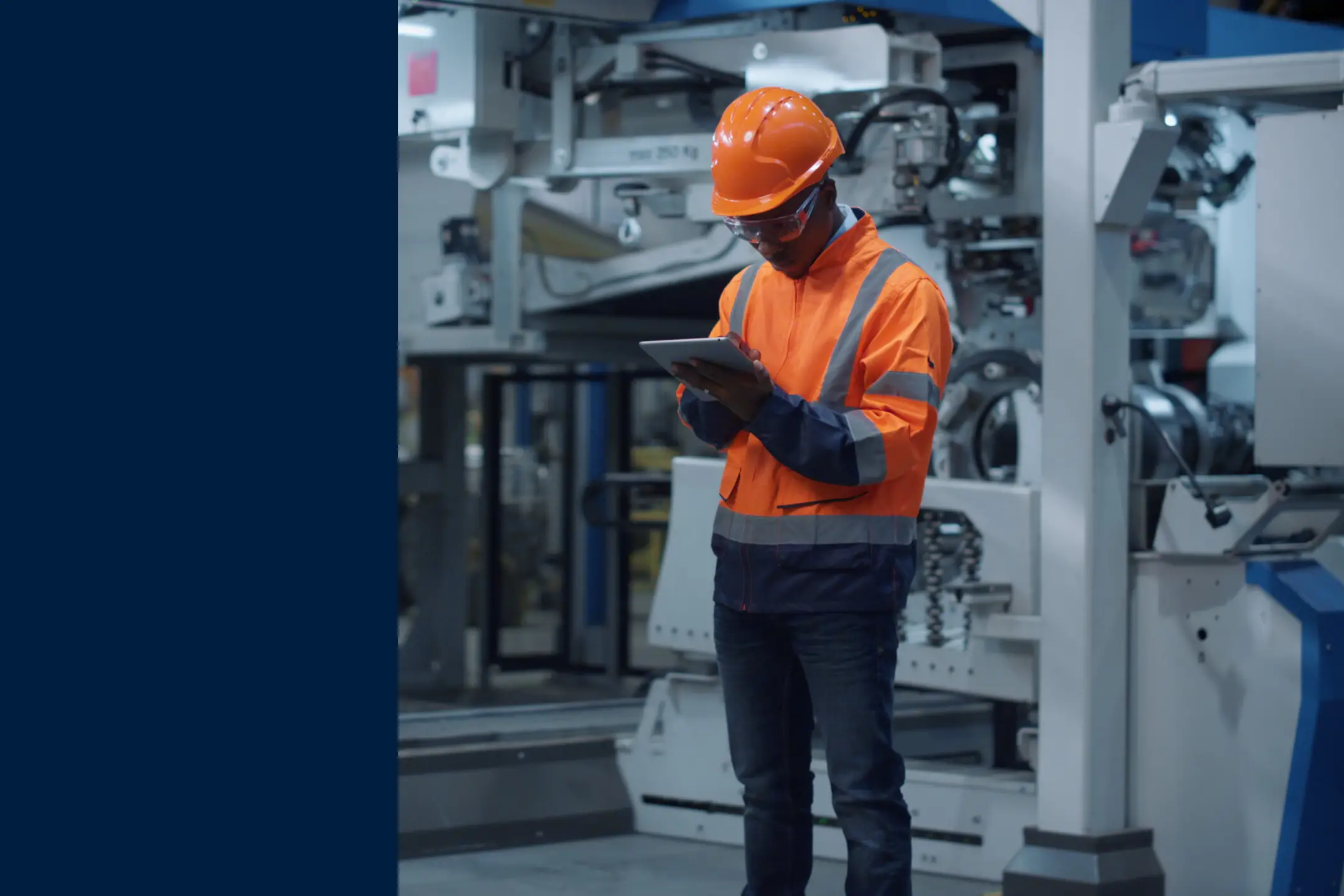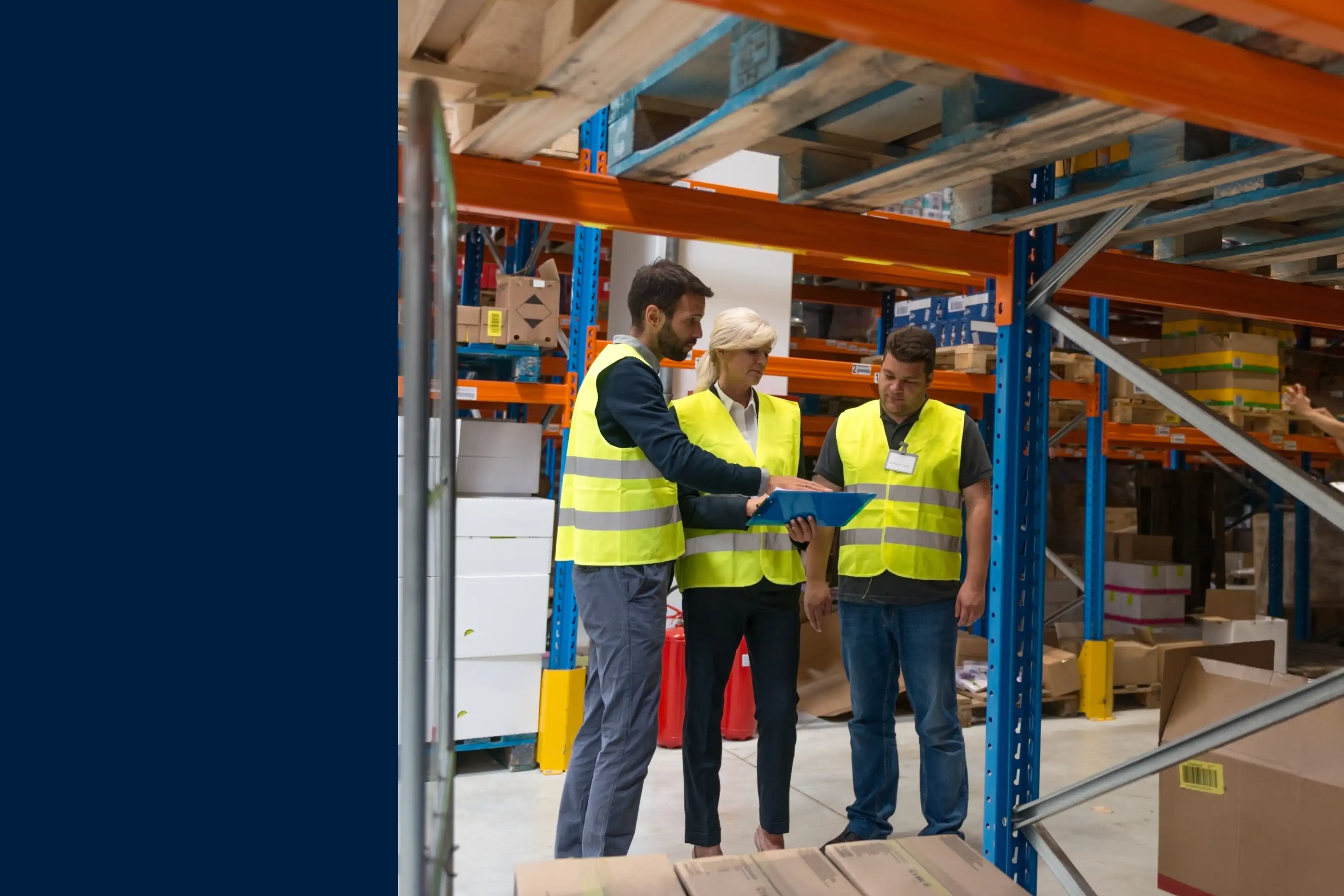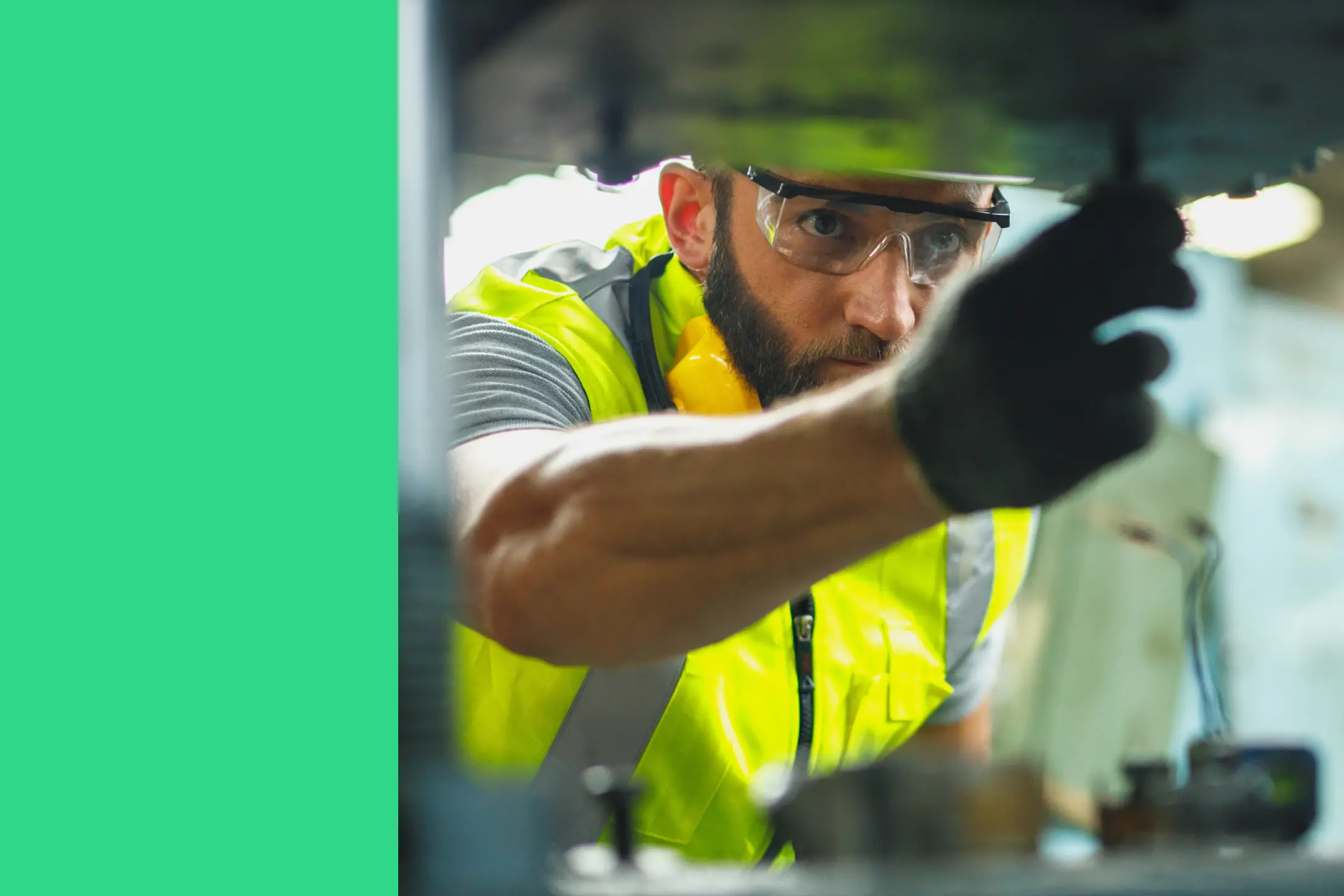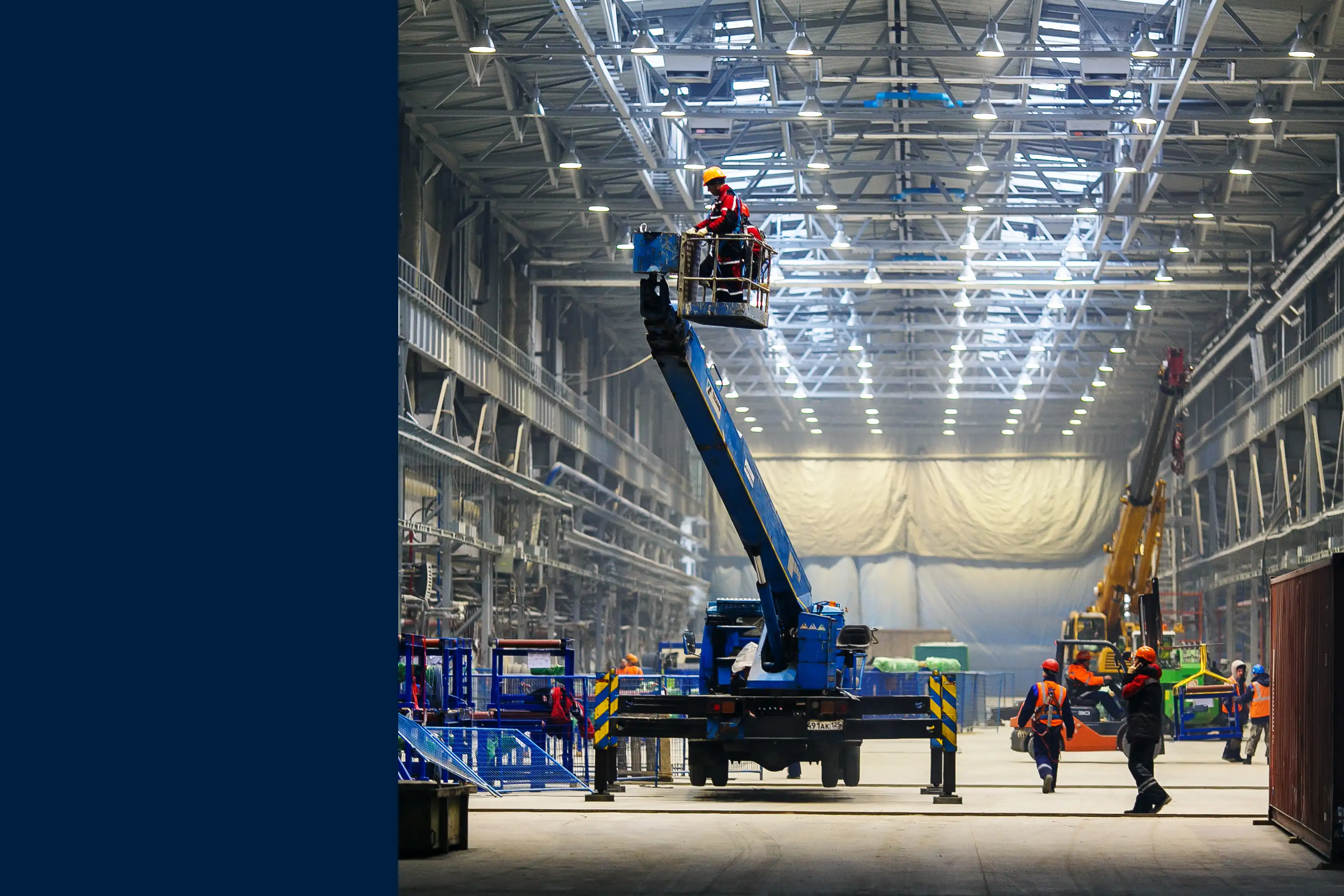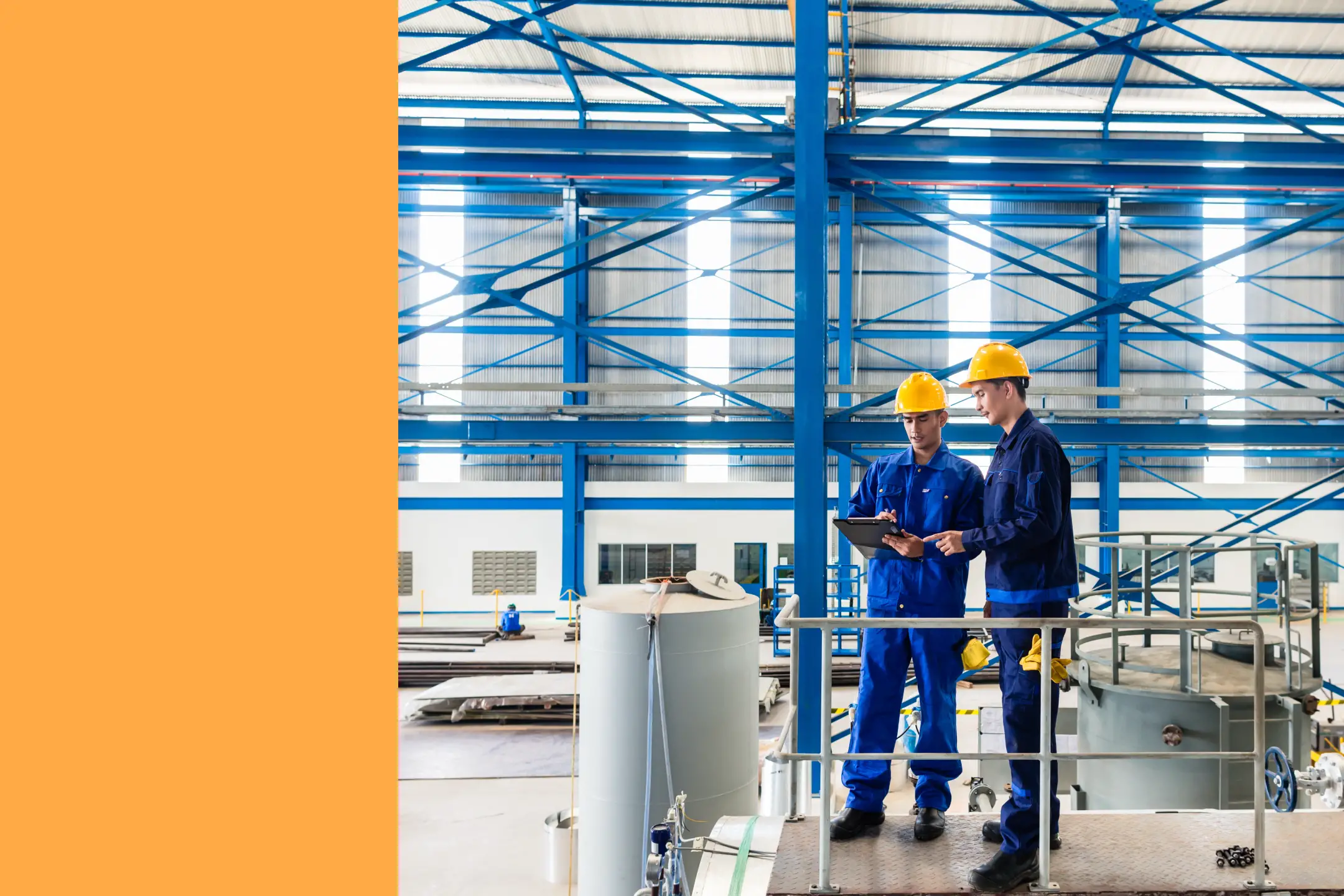
Preventive maintenance (PM) programs reduce unnecessary operations and maintenance spending while delivering measurable returns on investment. This article explores how PM programs cut costs, extend equipment life, and improve operational efficiency. We'll also review how to calculate PM savings for your organization and measure program effectiveness through key performance indicators.
Key takeaways
- A preventive maintenance program slashes costs by stopping expensive equipment breakdowns before they happen.
- Regular upkeep extends the useful life of critical assets, deferring large capital expenditures on new equipment.
- Tracking key performance indicators, like planned maintenance percentage is essential to measure the financial impact and prove the return on investment of your PM strategy.
- A computerized maintenance management system automates PM scheduling, tracks compliance, and shows you exactly where maintenance dollars go.
Preventive maintenance workflow
Preventive maintenance involves scheduling regular inspections and repairs on equipment before problems occur. This proactive approach prevents bigger, costlier failures in manufacturing facilities and other asset-heavy operations.
Many facilities managers run preventive maintenance systems under the philosophy that prevention is better than cure. Practicing preventive maintenance is done to prevent larger problems from occurring rather than to eliminate all equipment issues.

The Clinical Engineering Handbook defines preventive maintenance as maintenance carried out according to predetermined technical criteria. Equipment manufacturers indicate these criteria in their documentation with the intention of reducing equipment failure or service degradation.
Preventive maintenance covers any upkeep that identifies and corrects the early stages of equipment damage or failure, or stops it from happening entirely.
Why is preventive maintenance important?
Performing preventive maintenance on critical assets saves companies significant money. PM programs are especially crucial for industrial organizations (manufacturers, warehouses, and power plants) that rely on specialized machinery to serve customers every day.
According to maintenance expert Sandy Dun, organizations allocating 40% of their monthly operations and maintenance budget on unplanned maintenance need to change their approach immediately.
An emergency breakdown can set facility production targets back for hours, if not days. Manufacturing downtime costs as much as $5,600 per minute according to industry studies. Even small- and medium-sized businesses save thousands annually by improving their maintenance scheduling.
How a computerized maintenance management system enhances preventive maintenance
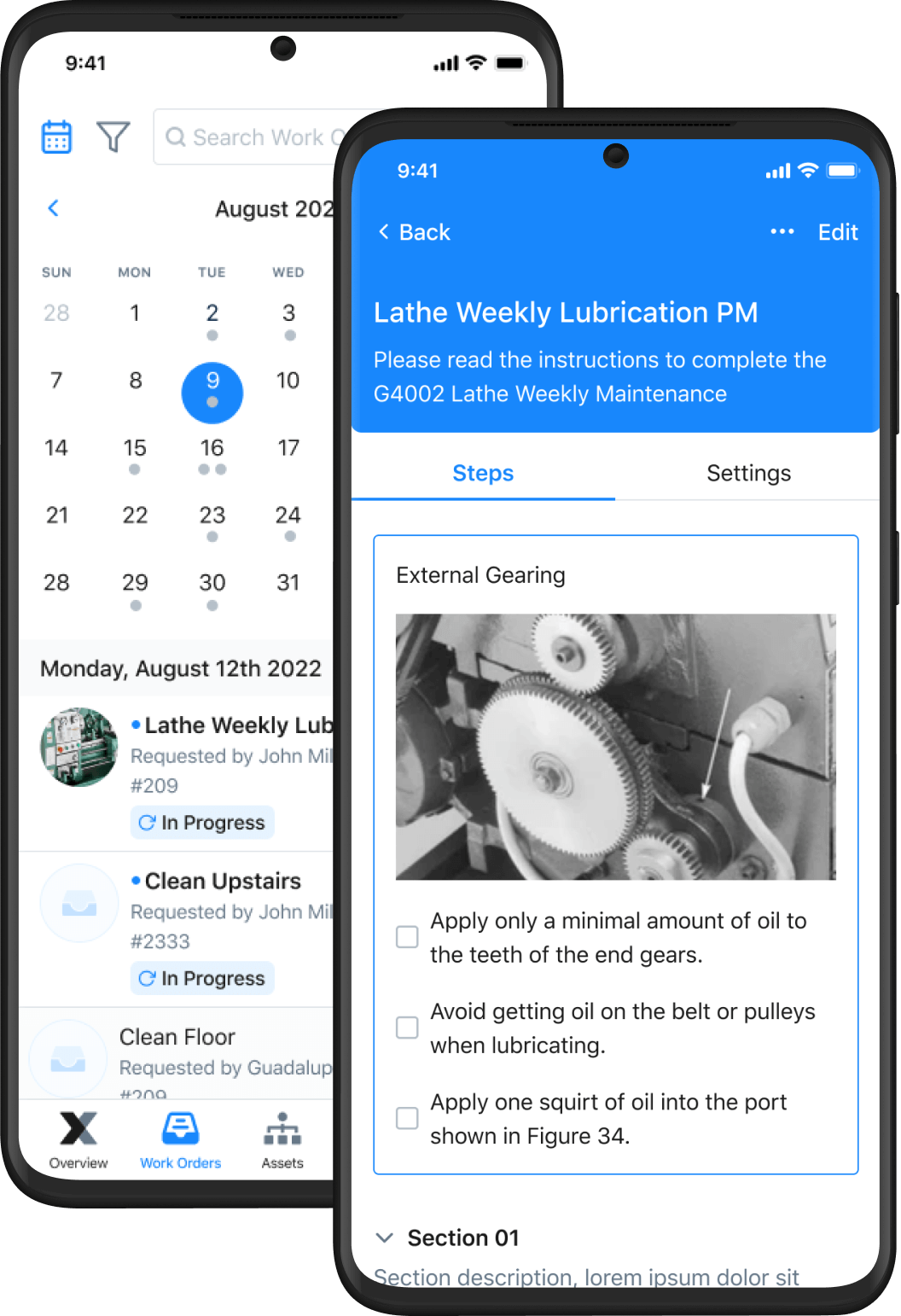
A computerized maintenance management system (CMMS) is software that helps organizations manage maintenance tasks efficiently. CMMS features support cost-effective decisions and improve communication among team members.
Maintenance managers can use CMMS software to identify and address unnecessary spending patterns. While material, labor, and overhead expenses are direct costs, CMMS reporting tools can identify indirect costs like lost parcels, late deliveries, and high energy consumption.
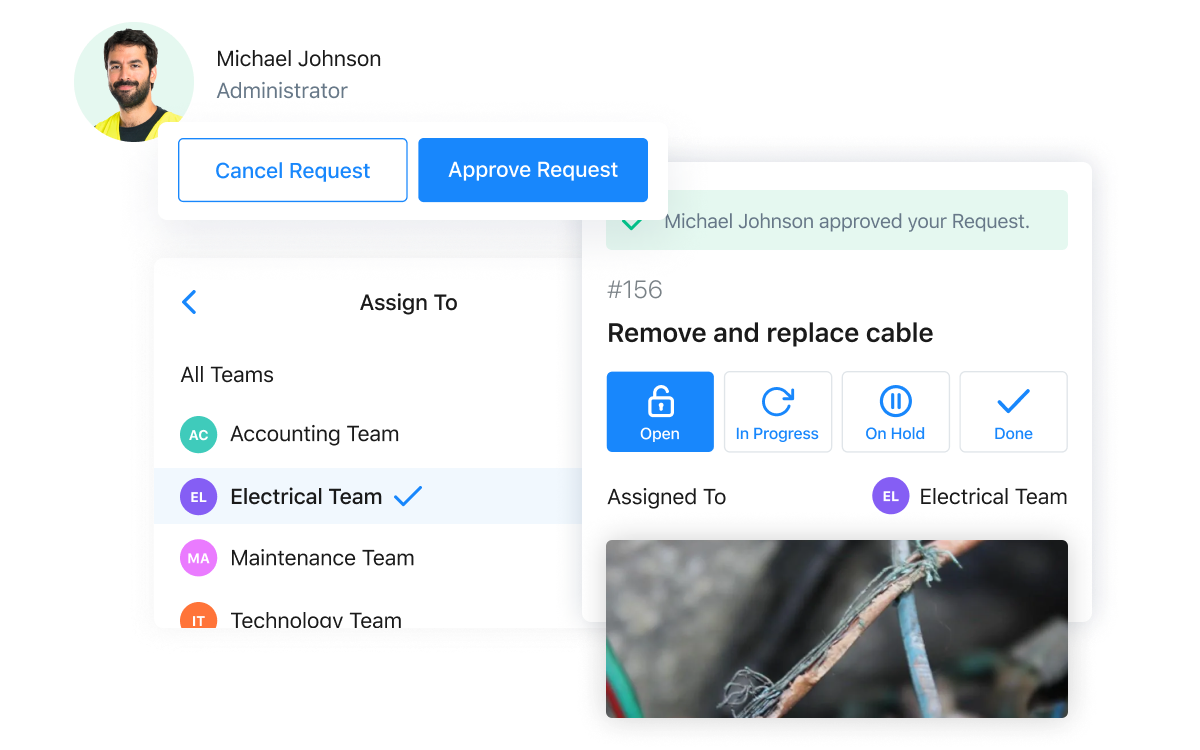
Types of preventive maintenance
Choosing the right type of preventive maintenance helps you balance cost and risk. Each approach offers a different level of proactivity for managing your assets.
Time-based maintenance
This is the simplest form of PM, where maintenance tasks are scheduled at regular, predetermined intervals, such as weekly, monthly, or quarterly. For example, you might schedule a technician to inspect and lubricate a conveyor belt motor on the first of every month, regardless of how much it has run.
Usage-based maintenance
Usage-based maintenance triggers tasks based on actual equipment use. You could measure this in hours of operation, production cycles, or miles driven. For instance, your team would change the oil in a forklift after every 250 hours of operation, which is a more precise approach than a simple time-based schedule.
Condition-based maintenance
Condition-based maintenance (CBM) involves monitoring the real-time condition of an asset to determine when maintenance is necessary. You perform work only when certain indicators show signs of decreasing performance or upcoming failure. An example is using vibration analysis on a pump to check for bearing wear and only scheduling a replacement when vibrations exceed a set threshold.
Predictive maintenance
Predictive maintenance (PdM) is an advanced form of CBM that uses sensor data and analytics to forecast when a failure will occur. Instead of just reacting to a condition, you predict it. For example, you could use thermal imaging on electrical panels to predict a connection failure before it happens, allowing you to schedule repairs during planned downtime.
Preventive Maintenance Cost Savings
Smart preventive maintenance programs cut unnecessary spending from unplanned breakdowns in four key ways:
1. Reduces unplanned downtime risks
Time is money. This phrase rings especially true when it comes to the cost of equipment downtime.
Downtime refers to the total amount of time machinery is out of order. It's either the result of an unplanned breakdown (e.g., a forklift battery dies) or a planned shutdown (e.g., a technician lubricates conveyor belt parts per a facility's monthly maintenance schedule).
The biggest advantage of planned downtime? Maintenance managers can schedule it to take place outside of production hours or distribute maintenance tasks to minimize disruptions.
Alternatively, unplanned downtime often results in emergency maintenance. To remedy equipment malfunctions quickly, organizations must spend extra money on:
- Outsourced specialists: Emergency technician rates cost 2–3x normal hourly fees
- Overtime labor: Time-and-a-half pay for your maintenance team
- Rush shipping: Expedited parts delivery fees that exceed part costs
Manufacturing facilities like Titan America overcame these challenges by decreasing unplanned maintenance by 30% through strategic PM implementation.
Combine these expenses with potential profits lost because of production delays and you understand why preventive maintenance makes financial sense.
2. Increases operational efficiency
Operational efficiency measures what you put in versus what you get out. Equipment purchase and maintenance costs directly affect this balance.
Preventive maintenance cuts down on extra costs by preventing reactive maintenance. Also called run to failure, this type of maintenance refers to tasks that technicians perform after a piece of machinery has already broken down.

Unexpected breakdowns usually mean multiple parts fail at once. The expense of critical parts plus overtime costs often translates to severe financial losses for manufacturing facilities.
Following maintenance schedules lets technicians catch small problems before they cause major shutdowns. This is how Electro Cycle increased their preventive maintenance percentage from 40% to 70%.
Taking action early cuts both emergency repair costs and lost productivity. PM schedules help organizations maintain high operational efficiency with lower running costs.
Boost Throughput, Cut Repair Costs
3. Increases equipment useful life
Imagine having consistently reliable equipment that runs smoothly for many years without the need for replacement. You achieve this outcome by practicing preventive maintenance.
As you reduce a machine's unplanned breakdowns, you increase its useful life. An asset's useful life is defined as the period of time a company expects a machine to remain functional and earn revenue.
Many factors impact the ideal time span of ownership, including an asset's age, its environment, and how often it runs. Physical and economic impact factors that affect equipment useful life are:
- Physical factors: Asset expiration date, wear and tear, decay, and unexpected events like fire, flood, and theft.
- Economic factors: Changes in asset demand, asset replacement with a more efficient version, and unforeseen physical/technical degradation.
The bottom line: maintaining equipment according to recommended guidelines extends its longevity by years, thus saving thousands of dollars in early-replacement costs.
4. Improves customer service
Customer opinion drives business success. The most profitable companies all excel at one thing: customer service.
Consistency, trustworthiness, and quality are three elements that turn companies into reputable brands people trust. Achieving this outcome requires equipment reliability.
Done right, preventive maintenance programs create more loyal customers and referrals. Reliable equipment translates to reliable customer experiences.
Preventive maintenance helps ensure consistent equipment functioning. With the increasing trend of social media engagement, one disappointed customer causes serious damage to an organization.
History is rife with examples of competing fledgling businesses experiencing both wild success and colossal failure because of good and bad customer service. In summary, preventive maintenance is an important cog in the wheel of long-term customer satisfaction.
Examples of preventive maintenance tasks
Clear, repeatable tasks build a successful PM program. For maintenance managers overseeing manufacturing facilities, your PM plan will vary based on specific equipment, but typically includes routine inspections, cleaning, lubrication, and parts adjustments.
Common preventive maintenance tasks in manufacturing and industrial settings include:
- Inspecting and cleaning HVAC filters and coils
- Checking and topping off fluid levels in forklifts and other mobile equipment
- Lubricating bearings and chains on conveyor systems
- Calibrating sensors and gauges on production machinery
- Tightening bolts and electrical connections on CNC machines
- Testing safety systems, such as emergency stops and guards
How to measure preventive maintenance effectiveness
How do you know if your PM program is saving you money? Measure your efforts with key performance indicators (KPIs). These KPIs show how well your PM program performs:
Planned maintenance percentage
Planned maintenance percentage (PMP) measures planned maintenance tasks compared to all maintenance tasks. Maintenance managers use this metric to track PM program progress and identify opportunities to reduce reactive maintenance.
Manufacturing facilities like Villages Golf and Country Club achieved a 116% increase in preventive work while decreasing reactive work by 30%.
To calculate PMP, divide total hours spent on planned maintenance activities by total maintenance hours, then multiply by 100.

Preventive maintenance compliance rate
PM compliance rate comprises the number of completed planned tasks vs. the total number of planned tasks. To calculate, divide your total number of completed PMs by your total number of PMs within a given period. Then, multiply the result by 100 to calculate your schedule compliance percentage.
PM compliance = (# of completed tasks ÷ number of scheduled tasks) × 100
Keeping track of the exact number of executed PM tasks using paper work orders is daunting. Consider employing a CMMS to digitally track completed PMs for easy access.
Scheduled maintenance critical percentage
Scheduled maintenance critical percentage (SMCP) quantifies the tasks your team isn't performing on time. Delayed PM implementation results in equipment damage and increased expenses. Calculate SMCP by adding the number of days scheduled maintenance is late to the number of days in a maintenance cycle. Divide your result by the number of days in the maintenance cycle and multiply that number by 100 to arrive at a percentage.

The final word on preventive maintenance ROI
PM programs directly reduce costs through decreased downtime, extended equipment life, and improved operational efficiency.
Many manufacturers still use outdated maintenance practices that limit worker productivity and production capacity. MaintainX bridges this gap with a mobile-first platform designed for the modern industrial workforce.
Our customers report an average 32% reduction in unplanned downtime and measurable cuts to monthly maintenance costs. Ready to see these results in your facility? Sign up for free and start your PM transformation today.
FAQs
What are the four main types of preventive maintenance for manufacturing facilities?
The four primary types are time-based, usage-based, condition-based, and predictive maintenance. Time-based tasks occur at set intervals, while usage-based tasks trigger based on operational hours or cycles.
What are the core elements of a preventive maintenance plan for industrial operations?
A strong PM plan includes asset inventory, standardized work procedures, scheduled maintenance tasks, parts inventory management, and maintenance key performance indicators for tracking success. A CMMS integrates these elements into one manageable system.
What is the 10% rule for preventive maintenance scheduling in manufacturing operations?
The 10% rule ensures PM tasks complete within 10% of their scheduled frequency. For example, monthly maintenance should finish within three days of the due date, maintaining schedule compliance without being overly rigid.

